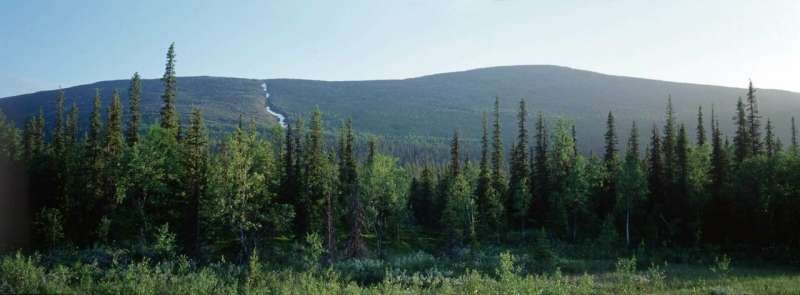Credit: Erkki Oksanen Luke
A joint study by the Natural Resources Institute Finland (Luke), University of Lapland and Geological Survey of Finland called GovAda, which gathers scientific, peer-reviewed publications on the metallic, coal and industrial minerals and precious stones of the Arctic region, sheds light on the subject.
The publications show that the environmental effects of mines will be reflected for decades into the future and affect both terrestrial and marine ecosystems. The effects are mainly generated by heavy metals that are accumulated in plants and animals and can cause changes in the reproductive success of different species and thus reduce biodiversity.
"There are surprisingly few environmental studies on prevention of risks and adverse effects, as well as studies anticipating the effects of climate change. For example, melting of the regions with permafrost could increase acid mine drainage, which might increase the amount of heavy metals being carried into the soil from mines," says Anne Tolvanen, professor at Luke, who is the responsible author for the publication.
The economic benefits could go elsewhere
The positive economic effects of mining are reflected on other trades, such as services, during mining operations and mineral prospecting. However, in sparsely populated regions, for example in Arctic Canada or Greenland, the economic links of mining with other trades of the region are weak, and temporary workforce often comes from outside the region. Thus, there is no development in the local services, and the economic benefits mainly end up elsewhere.
"In studies regarding economic effect, all effects of mining, such as the environmental effects and the effects on producing public services, have often not been taken into considerations. Also in Finland, it is feared that the environmental effects and the impact on the landscape of mining would, for example, compromise the prerequisites for operations for tourism," Tolvanen says.
She encourages to make comprehensive economic evaluations of mining, which would shed light more comprehensively on to what extent the economic benefits and adverse effects would remain in the region. At the same time, practical methods for ensuring the viability of the regions also after mining operations are ended, are needed.
Legislation alone is not enough
"Legislation is used to attempt to avoid and minimise the negative effects of mining. However, environmental standards are often inexact and implementation is often insufficient," says professor Jukka Similä from the University of Lapland who leads the GovAda research project.
Health effects can also be left outside the impact assessments. Shortcomings of legislation became apparent also when evaluating the principle of prevention of adverse effects and compensation related to it.
"Legislation is often criticised also for not effectively securing the prerequisites for operations of traditional trades and for not engaging he local or original population in decision-making regarding mines," Similä says.
More information: Anne Tolvanen et al. Mining in the Arctic environment – A review from ecological, socioeconomic and legal perspectives, Journal of Environmental Management (2018). DOI: 10.1016/j.jenvman.2018.11.124
Journal information: Journal of Environmental Management
Provided by Natural Resources Institute Finland
























